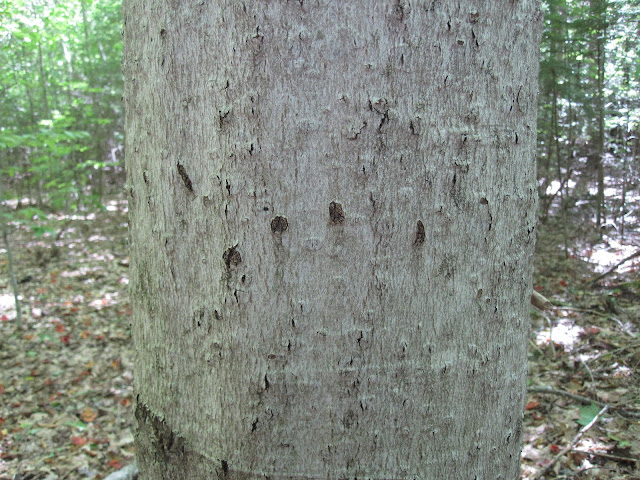 |
| Mt. Chocorua from Great Hill in Hemenway State Park |
 |
| Looking South from Great Hill |
 |
| Mt. Chocorua from the White Mountain Ledge |
 |
| Mt. Lafayette and Mt. Lincoln |
Along the way I found some ripe berries on an Indian Cucumber-root
and a new plant I haven't seen before, or perhaps more accurately, hadn't noticed before:
It is a Rattlesnake Plantain, and it isn't rare, perhaps just not very conspicuous. It is an evergreen, and a member of the orchid family. It has a distinctive appearance with many white veins throughout its leaves.
Looking in the other direction, this is all that's left of last week's Full Harvest Moon.
 |
| Under-Cast at Lake Wicwas |
It was even more pronounced over Lake Winnisquam.
The radio tower and the tops of the trees on the hill along Parade Road were just poking up through the clouds as the sun was coming up.
I was at Crockett's Ledge before sunrise, and was able to witness the spectacle of the sun rising over and through the morning fog.
 |
| Sunrise from Crockett's Ledge |
Fall in New Hampshire - this is why people come from around the world to visit see our special part of the planet. Even without fall color, it's hard to beat.

















































